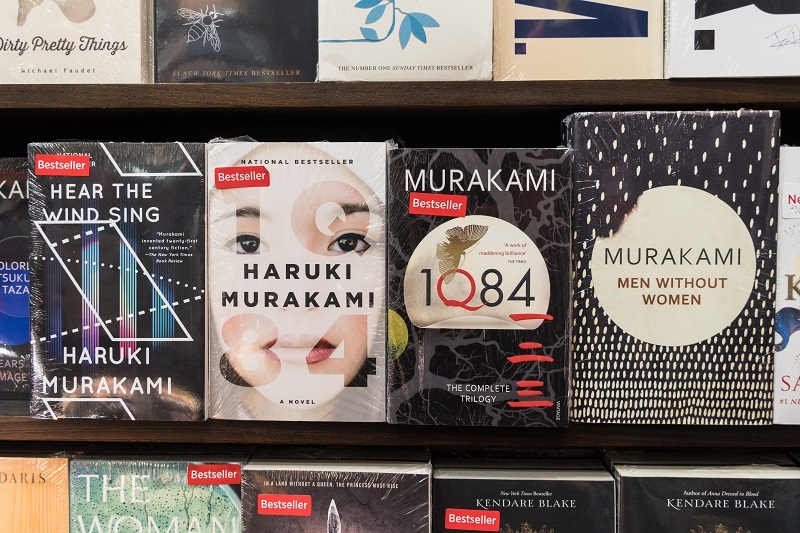
Haruki Murakami is an acclaimed author of superb contemporary fiction; his dream-like story construction is what he's famous for. His novels frequently mingle the borders between reality and fantasy, often making readers ponder what is real and what is imaginative. Exploring his writing can therefore be equally intriguing and perplexing for his neophytes.
If you want to begin with Murakami, grasp his style of writing and familiarize yourself with some of the top Haruki Murakami Novels that reflect his one-of-a-kind story crafting.
The main reason for the uniqueness of Murakami's writing is the fact that he managed to bring the normal life and fantasy together without losing the essence of the story. In his stories, a normal thing may have a chain of mysterious and magical events-like.
The characters in his stories are usually people of no particular distinction who find themselves in remarkable situations. They are lonely, reflective, and on a quest for purpose, which is why you can connect with their novels on a human level even though they feature magic. The core issues of love, grief, identity, and fate are happening quite often in his works, draped in stories that give the feeling of slipping in and out of reality.
Here are some of the top Murakami books recommended:
For starters, "Norwegian Wood" is the first choice recommended. It indeed is a far cry from his other works where fantasy is the main theme, thus a good way to introduce new readers to the author's style. The novel centers on Toru Watanabe, a college student who has to find his way through love and loss in 1960s Tokyo.
Though it is different from most of Murakami's work in terms of magical realism, it can still be regarded as the author's prowess in dealing with human feelings and reminiscence.
The book entitled "Kafka on the Shore" remains one of the Murakami works that best demonstrate magical realism in conjunction with Murakami's style. The plot revolves around the characters of Kafka Tamura, a fifteen-year-old who runs away from home, and Nakata, an old man who can surprisingly talk with cats.
What happens are strange events such as talking cats, fish falling from the sky, and other metaphysical occurrences that challenge our intelligent perception of reality, and these become the intersecting roads of their lives.
"1Q84" is one of the most awarded titles by Murakami, consisting of three volumes. It mixes love, mystery, and fantasy, but takes place in a parallel version of 1984 Tokyo. The plot centers on the lives of assassins Aomame and writer Tengo, who get entangled in a world that has minor but significant differences from reality.
Quite a few readers find it easier to follow the complex plot of the novel if they use "1Q84 themes explained" guides. The novel explores themes of parallel worlds, powerful and manipulative cults, and the influence of storytelling. Though more complex compared to other works of Murakami, "1Q84" is a hassle-free read for anyone who is interested in the author's blending of dream-like elements with real-life issues.
"The Wind-Up Bird Chronicle" is widely regarded as one of the best new Murakami works. In it, the protagonist Toru Okada embarks on a quest to find his missing wife amongst a host of bizarre characters and strange, bewildering events. In this way, the plot alternates between the ordinary and extraordinary, metaphysical reminiscences of war, and psychological exploration.
This embodies the Surreal Murakami universe in which the features and themes of magical realism are interspersed with the author's uniquely peculiar narrative style. The reader is engrossed with a narrative and tone that are somewhat haunting yet fully captivating; the author's tendency to express self-reflection with narrative imagination is synergistic.

One of the highlights of "Hard-Boiled Wonderland and the End of the World" is definitely its split narrative, which divides the story between two worlds: dystopian Tokyo and a strange walled town. Through the novel, Murakami probes the topics of consciousness, memory, and identity, challenging his readers to rethink where the line between dream and reality should be drawn.
This is a must-read for anyone who wants to step into Murakami's fantastical and magical-realist-inspired worlds. The unique dual narrative structure not only provides a fascinating reading experience but also invites the readers to consider deeper philosophical queries.
"Sputnik Sweetheart" is all about love that is never returned, the journey of self-discovery, and the enigmatic quality of human relationships. The plot revolves around Sumire, a would-be writer, and her affair with a woman named Miu. The typical Murakami-sudge surreal elements are implanted faintly, fashioning a dreamy backdrop that heightens the characters’ emotional sphere.
If you are a fan of a quick and easy Murakami novel, then this book would be perfect as a primer for his magical realism and thematic intricacy.
"After Dark" tells the story of an eventful night in Tokyo, presenting the lives of several people who are somehow connected, and who turn out to be lonely, desireful, and only see the city with its facades of a darkness. The plot of the novel reads like a dream, where time behaves in unexpected manners such as lengthening and shortening.
If you want to understand Murakami's weird fiction in the most concentrated way possible, this piece is right for you, showing his talent in turning the familiar into the bizarre and making a short novel as touching and deep as his long ones.
The first time readers of Haruki Murakami are advised to listen to the easiest albums from the composer such as "Norwegian Wood" and "Sputnik Sweetheart" and then proceed to the more abstruse ones like "1Q84" and "The Wind-Up Bird Chronicle". Observing common themes—cats, wells, twinned universes, music, and mystical happenings—can greatly deepen the enjoyment of reading the novels.
While reading, try to keep your mind open. It is not always easy to find a plain and simple explanation for the plots in Murakami's novels. Part of the process is to accept the vagueness and the play between dream and reality. Also, reading literary debates or a beginner's guide to Murakami resources can greatly help by pointing out the recurring themes and symbols.
The reason Murakami's novels gain such mass appeal is their combination of surrealism, profundity of emotion, and philosophical inquiries. They are primarily constructed of magical realism and Murakami's signature dreamlike style, while also describing themes of loneliness, love, and longing.
With each book he writes, he is inviting his reader into a world where the dreamlike and the everyday are placed side by side and that ability to draw the reader into the experience is what makes his novels so immersive and intellectually stimulating.
Haruki Murakami novels are unlike anything else, and the readers will find that Murakami manages to blend dream and reality almost seamlessly.
Murakami's surreal fiction, magical realism, and philosophical aspects within his stories will guarantee that his writings will be enjoyable and timeless. When you become engrossed in his writings with a willingness to accept what unfolds, even first-time readers will never forget the world that Murakami meticulously crafted for them long after they have closed the final page.
This content was created by AI